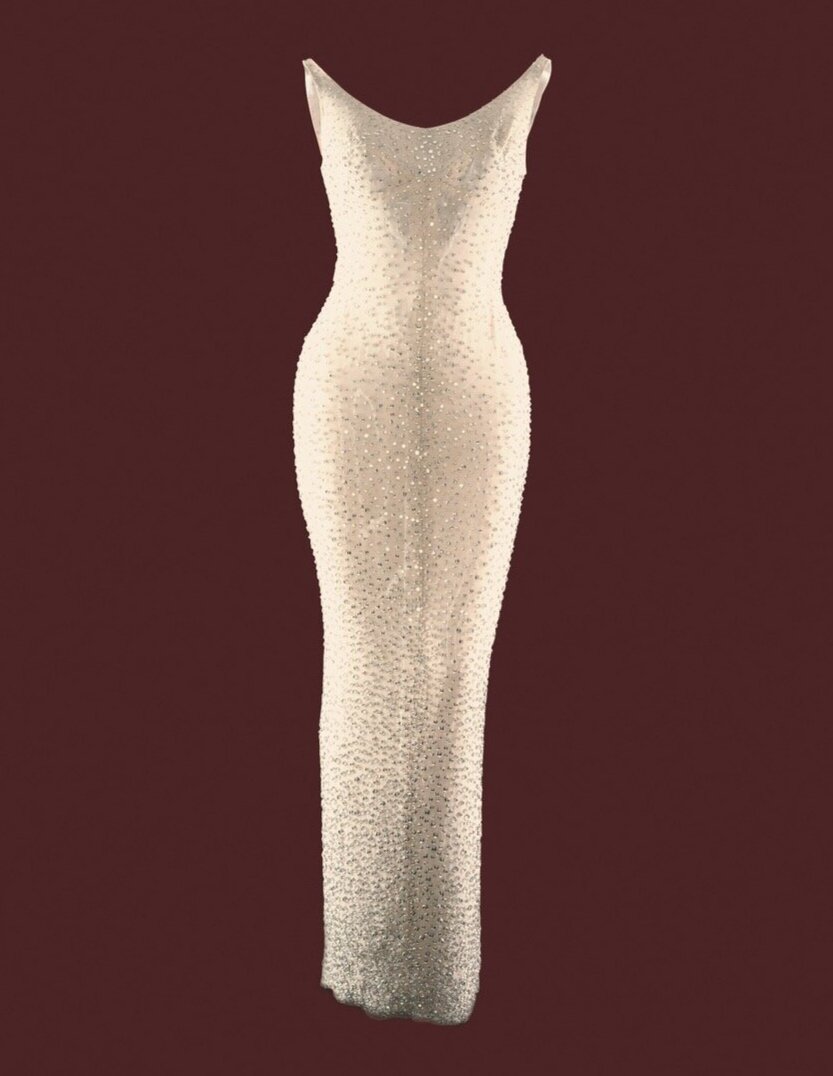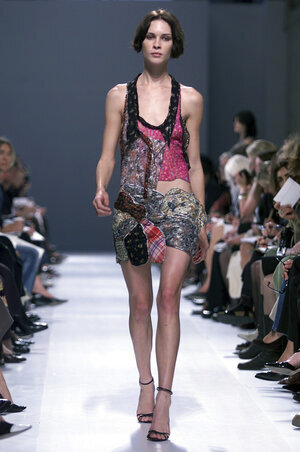Fashion-Forward
20 May 2021
Iconic fashion items - what makes an investment piece and how to spot one.
Avril Groom
Avril Groom writes on jewellery, watches and fashion for Telegraph Time, Times Luxx, FT How to Spend It magazine, Centurion magazine and Country and Town House magazine, among others.
Yves Saint Laurent Haute Couture, Spring Summer 1999, a silk satin and birds of paradise feathers evening dress. Sold for €12,500 at Christie’s in January 2019, in the Catherine Deneuve et Yves Saint-Laurent auction.
Image courtesy of Christie’s.
Ever since fashion exhibitions became museum must-sees, clothes have become a branch of applied art that fetch serious money at auction and are highly collectable if they merit the overworked term “fashion icon”. These are not the slightly fusty costume displays that museums have long hosted. Travelling exhibitions of 20th century designers’ work have lavishly designed sets and long queues. The Dior exhibition in 2019 and the Alexander McQueen show in 2015 at the V&A attracted almost 600,000 and just under 500,000 people respectively, both spin-offs from originals at Paris’s Musée des Arts Décoratifs and New York’s Metropolitan Museum where nearly 1.4 million saw them.
What makes a fashion icon? Christian Dior was one of Paris’s most revered couturiers who invented the famous New Look and whose starry career was cut short by his death only a decade after opening his house. Alexander McQueen was perhaps the greatest creative and disruptive force in fashion at the start of the 2000s with a career ended tragically early by suicide. Both produced relatively limited amounts of work – Dior concentrated primarily on custom-made haute couture while up to a third of each McQueen collection was made-to-order – and rarity adds a premium.
The most valuable styles are those with a well-known image, preferably on a celebrity. The world auction record is currently $4.8 million, in 2016 for the spangled, diaphanous, figure-hugging dress worn by Marilyn Monroe to sing Happy Birthday to President Kennedy in 1962, when she was rumoured to be having an affair with him. The combination of stars, intrigue and a daring dress proved an investment winner – it had been sold by Christie’s New York in 1997 for less than $1.27 million. The Monroe dress was officially designed by a noted Hollywood designer called Jean Louis, but apparently actually created by the eventually better known Bob Mackie, who was working for Louis as a post-grad at the time. Knowing the outfits he later made for Cher, for which he is best-known, I can believe it!
Marilyn Monroe Dress, worn to sing Happy Birthday to President Kennedy in 1962. Sold for less than $1.27 million at Christie’s in 1997, later sold for $4.8 million in 2016.
Image courtesy of Christie’s.
Even key styles from celebrated designers are not in that league without the starry associations. A long black 1938 coat heavily encrusted with gold and pastel embroidery and beading by Elsa Schiaparelli, who linked fashion and the Surrealist art movement and a fashion icon herself, recently sold for about €500,000 in Paris, setting a new record. The previous record was €382,000 at Christie’s two years ago for a vividly beaded jacket inspired by Van Gogh’s Sunflowers painting, from Yves Saint Laurent’s spring 1988 collection based on world-famous paintings and one of his most iconic. As Camille de Foresta, Christie’s Paris specialist auctioneer explains, “the grail is a combination of stunning dress, internationally famous personality and an important, newsworthy event. But if the dress is unremarkable, even in those circumstances it will sell for far less”.
Key pieces invariably go to museums or wealthy private collectors, so what chance does the interested individual have? Considerable if you research, say the experts. “Keep checking sale catalogues”, says de Foresta. “Our 2019 sale of Yves Saint Laurent pieces owned by Catherine Deneuve, who was a close friend of his, were making up to ten times their estimate. An all-beaded dress she wore to meet Alfred Hitchcock in 1969 made €42,500 but a near-identical dress without the provenance went for £28,200 a few years earlier. And an unattributed version of a feather-trimmed black gown that we sold for €12,500 went for €8,000 at another Paris auction house in 2013”.
Gill Linton, founder of high-end vintage website Byronesque, which specialises in influential late 20th century designers such as the Paris-based Japanese (Comme des Garçons, Issey Miyake, Yohji Yamamoto, Junya Watanabe), Martin Margiela, Rick Owens and McQueen, says the key is “building an archivist mentality. Buy sparingly and top quality, with passion. Pick a style feature, a period or a designer you enjoy and extend to other versions of similar looks”. Narrative is important, she adds – “the Japanese shocked by shredding everything, Claude Montana by addressing S&M, Margiela with deconstruction and recycling, Rick Owens is revolting or revered, Galliano and Dolce e Gabbana proved politically controversial and McQueen shocked from bumsters onwards. They’re all memorable”. A version of one of the original John Galliano late 80s bias-cut dresses, which I bought from him for not much when he was living under his cutting table, sold for £3000 last year. Not a bad investment and I still wear it!
Fashion moves so fast, says Linton, “that the early 2000s are now very popular – Nicolas Ghesquière at Balenciaga and Tom Ford for Gucci, who sexualised 2000s fashion in a unique way.” The site has a Future Vintage section to direct buyers towards her future ideas, which include the work of Soviet-influenced Georgian designer Demna Gvasalia at Balenciaga and Vetements, and British talents Richard Malone and Harris Reed, who creates gender fluid design.
De Foresta’s current choices are individualists whose output cannot increase - McQueen (Christie’s recently sold a pair of armadillo boots from the 2009 Plato’s Atlantis collection for $161,000, as art objects), Margiela and Jean-Paul Gaultier who have stopped, the late Azzedine Alaia and the work for Lanvin of Alber Elbaz, who died very recently, all game-changers. Her future tips are, she says, “designers pioneering in sustainability”, such as Kevin Germanier, who creates high-octane evening dresses from old seasons’ fabric and Swarovski crystal, and edgy, sporty Marine Serre, who works with recycled or up-cycled materials. In a post-pandemic, climatically challenged world, designers who rise to it stand to be the next collectables.
Dress by Nicolas Ghesquière for Balenciaga, 2002.
Image courtesy of Byronesque.








